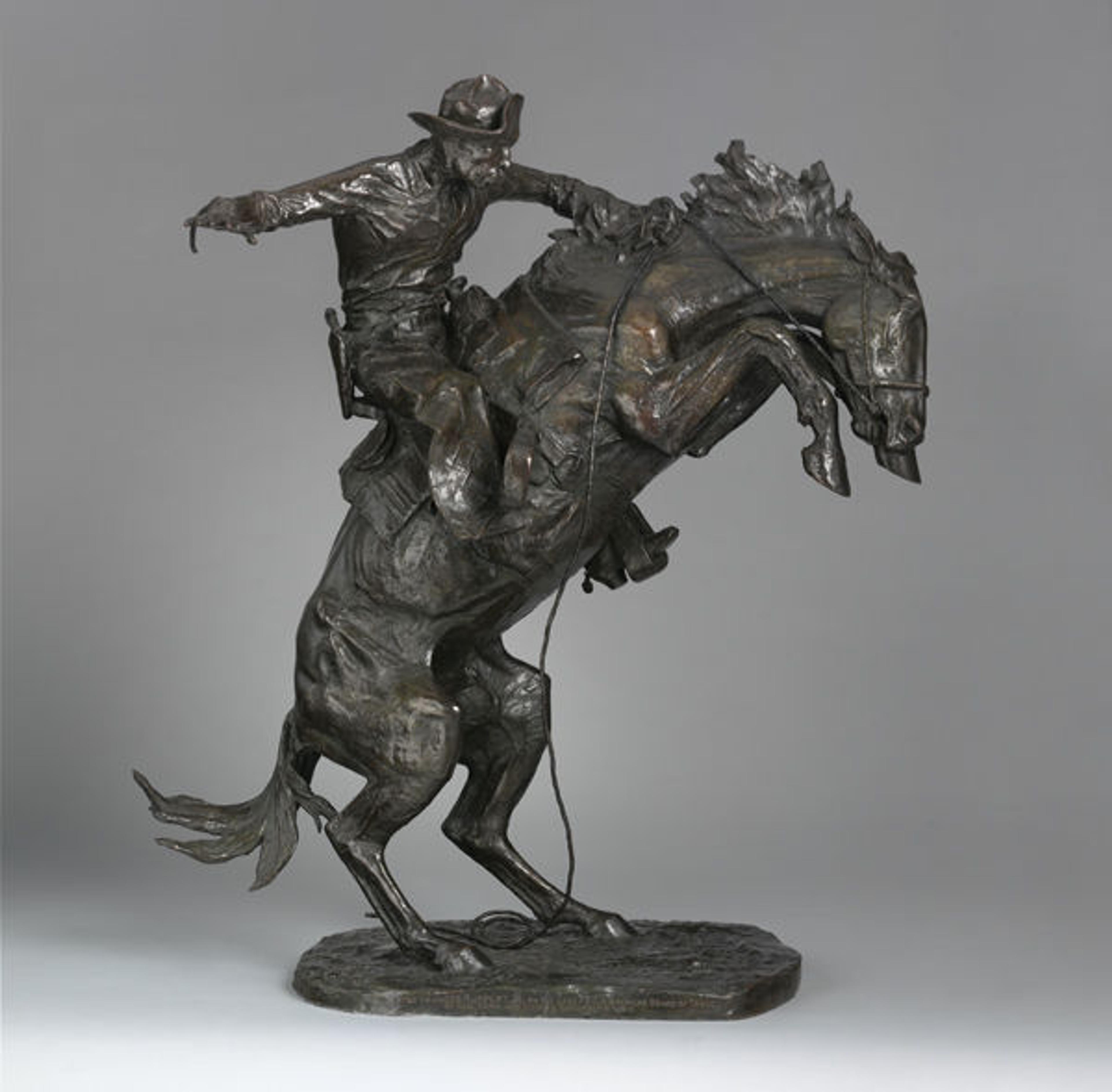Frederic Remington (American, 1861–1909 ). The Broncho Buster, 1895, revised 1909, cast by November 1910. Bronze; 32 1/4 x 27 1/4 x 15 in. (81.9 x 69.2 x 38.1 cm). The Metropolitan Museum of Art, New York, Bequest of Jacob Ruppert, 1939 (39.65.45)
«Sculptures capture emotions and body movements, which, in my opinion, makes them more relatable than paintings. The sculptures in the exhibition The American West in Bronze, 1850–1925 really evoke the American West, and the details bring the pieces to life. Cast in different sizes and displayed on pedestals of different heights, the pieces create an effect like a mountain range. The ridges and valleys work to draw your attention to each piece, no matter its size, and the lack of conformity allows the viewer to allocate time to each sculpture and absorb its details.»
The exhibition's opening lithograph is a giant prairie landscape, which adds to the Western frontier ambiance. An amazing aspect of the exhibition is how the color palette, which is derived from the lithograph, defines and differentiates the facets of the stereotypical West. The exhibition is structured around these four facets: Cowboys, Native Americans, Wildlife, and Settlers.
We found Frederic Remington's The Broncho Buster to be a perfect example of how sculpture can convey a common scene in Western life. It was this sculpture's height and position that drew our attention, though the other cast of the same piece in the exhibition was just as interesting. The minor differences in detail between the casts distinguish the pieces in a way that benefits the viewer.
Related Link
Works by Frederic Remington in the collection
